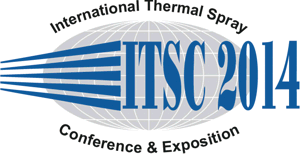
|
| Abstract No.: |
|
Scheduled at:
|
Thursday, May 22, 2014, Hall A 12:20 PM
HVOF- / HVAF-Spraying
|
|
| Title: |
Influence of the spray gun type on microstructure and properties of HVAF-sprayed Fe-based wear and corrosion resistant coatings
|
|
| Authors: |
Andrea Milanti* / Tampere University of Technology, Finland
Heli Koivuluoto/ Tampere University of Technology, Department of Materials Science, Finland
Petri Vuoristo/ Tampere University of Technology, Department of Materials Science, Finland
|
|
| Abstract: |
Thermally sprayed iron based hardfacing coatings are being widely studied as cost effective solutions and environmentally friendly alternatives to conventional WC-Co and nickel based coatings for wear and corrosion applications. The price fluctuation of strategic metals such as nickel and the inhalation toxicity problems related to Ni and WC has been forcing the research community to find alternative solutions. High-Velocity Air-Fuel (HVAF) spraying as relatively new thermal spray technique is one suitable coating production method due to advanced coating properties and being an economical manufacturing method. The aim of this study is to evaluate the microstructural details and wear and corrosion properties of novel iron based coatings prepared by using two different generation states of HVAF spray guns. These two generations of HVAF guns are Activated Combustion HVAF (AC-HVAF 2nd generation) M2 gun and Supersonic Air Fuel HVAF (SAF 3rd generation) M3 gun. Structural details were analysed by using XRD and FESEM. Higher density with homogeneous microstructure was reported for Fe-based coating deposited by the M3 process. Such coatings exhibit higher particle deformation and lower oxide content due to remarkably higher particle velocity performed at similar spraying temperature compared to M2 gun. Electrochemical properties were studied by polarization measurements and electrochemical impedance spectroscopy (EIS). Polarization resistance of coatings in 0.1M HCl electrolytic solution was evaluated. The lower porosity and higher interlamellar cohesion of coating manufactured with M3 gun prevent the electrolyte from penetrating through the coating and arriving to the substrate, enhancing the overall corrosion resistance. Sliding, abrasion and cavitation erosion wear resistances at room temperature were studied by ball-on-disk, abrasion wheel test and cavitation wear test, respectively. The high wear resistances of 3rd generation HVAF sprayed coatings were achieved in different testing conditions. This can be explained by the improved microstructures and coating performance.
|
|
